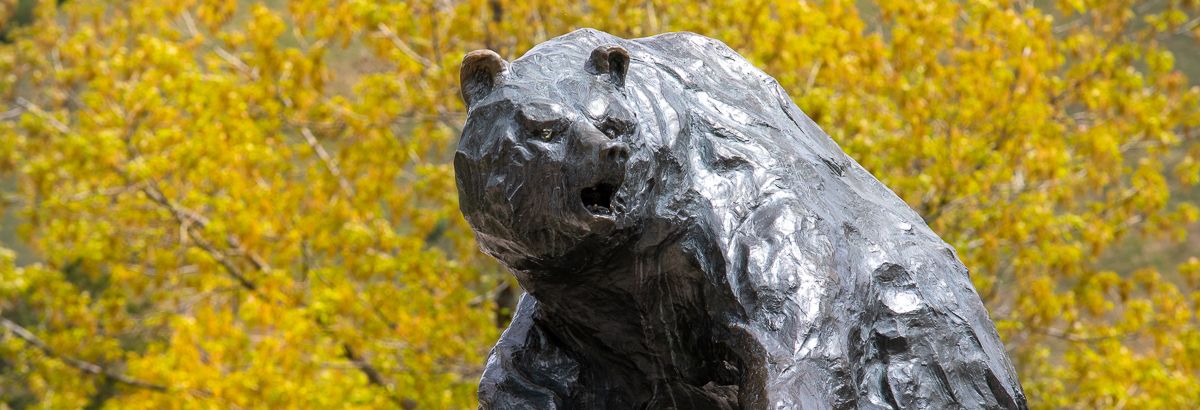Pre-law Program Grows with Strategic Investment
Philosophy professor Soazig Le Bihan started 老虎机攻略's pre-law advising program in 2013. For ten years she was the program. The one and only advisor. No budget except for what came out of her own pocket.
When she launched the program, Soazig (pronounced SWA zeeg) was advising about 30 students. A decade later, that number had swelled to 130.
"I was really at capacity," she says. "Beyond capacity. I was overwhelmed. I knew there was more demand for pre-law advising, especially because of the success we’ve had with 90 percent acceptance rate to law school, but I could not take on any more students, and I couldn’t deliver as good of a service as I wanted any more. And there were some things I had to give up.”
Then an opportunity presented itself. Soazig submitted a proposal to 老虎机攻略’s Flagship Fund and was one of eight submitters to receive financial backing in spring 2023.
“When I applied for Flagship funding I said this (pre-law) is an expanding thing,” Soazig says. “It’s been growing and growing and growing. I just need resources to make it continue to grow without me drowning.”
Flagship funding shifted pre-law from a one-person, no-budget program to a two-person team with a modest budget for operations and outreach. Soazig hired an associate director, Dr. Jeff Stephenson, and set about developing new curriculum, designing new branded materials, and ramping up outreach activities.
The investment, and Soazig’s strategic approach, produced rapid results. In fall 2023, 24 new freshmen enrolled in the pre-law advising program. This fall, 48 more new freshmen joined. That’s 20 more than originally projected.
A strategic approach
“One issue with pre-law is that because it’s not a major, the students don’t know each other. I really wanted the new generation of pre-law students to know that they exist and have a sense of belonging, a sense of community.”
-Soazig Le Bihan, 老虎机攻略 Pre-law program director
Brad Goan, Senior Advisor for Strategic Innovation at 老虎机攻略, touts the pre-law program as “a great example of how to run a pre-professional program with intentional programming throughout the student lifecycle.”
The pre-law transformation focused on three activities: student advising and mentoring, curricular innovation, and outreach.
Advising and mentoring
The most precious resource for the pre-law program is time. In 2023-24, Soazig and her colleague Jeff conducted 318 one-on-one advising sessions, each lasting 30-60 minutes. On top of that, they mentored 42 students and coached 13 through the law school application process.
“It’s always about time,” Soazig says. “It can’t be a 5-minute, 10-minute, or 15-minute appointment. I need to get to know them and that takes time. Because the program success directly depends on one-on-one, student-focused advising, this cannot be a mass production operation. There is no one-size-fits-all for a good applicant to law school.”
Curricular innovation
The first thing Soazig did with Flagship funding was to create new curriculum. She developed a pre-law certificate that included an introduction to pre-law course. Her intent was to help pre-law students get to know each other and build community.”
“One issue with pre-law is that because it’s not a major, the students don’t know each other,” Soazig says. “I really wanted the new generation of pre-law students to know that they exist and have a sense of belonging, a sense of community.”
Soazig also revived a Law School Admission Test (LSAT) prep course that she had been forced to discontinue due to a lack of capacity.
“When I created the pre-law program, I also created an LSAT prep course for credit because most of our students don’t have the money to pay for a $2,000 private course,” she says. Bringing the course back was important to Soazig. “I want them to have a good LSAT score and the best way to do that is to take a class because then you’re accountable.”
Outreach
Step one in outreach efforts was a total rebranding of the pre-law program. That included a new website, posters, flyers, and other promotional materials. Much of the creative design work was done by Phil Stempin, Director of Events, Marketing and Communications in the Blewett School of Law.
“Phil was fantastic,” Soazig says. “Now we look very professional when we go to events.”
The addition of Jeff Stephenson to the program provided capacity to do outreach for the first time.
“We did all the events we could do,” Soazig says. “We did Bear Fair and WelcomeFeast. We did an event for Native American students. We talk to prospective students. Because we have Jeff, we can now just say yes to all those things.”
Part of those outreach efforts have been focused on increasing Native American enrollment. That has included Jeff visiting reservations in Eastern Montana, something the program didn’t have the capacity to do in the past.
“It’s part of my principled vision of the program that we should reach out to Native American students and do everything possible to make them feel like they belong at 老虎机攻略 and belong in the legal profession because we just need more people working for the tribes,” she says.
Soazig recognizes that growth in Native students will take time.
“If we want to build a level of trust and build relationships, it’s not going to be one visit,” she says. “It’s going to be multiple visits. It’s going to be a continuous showing up.”
